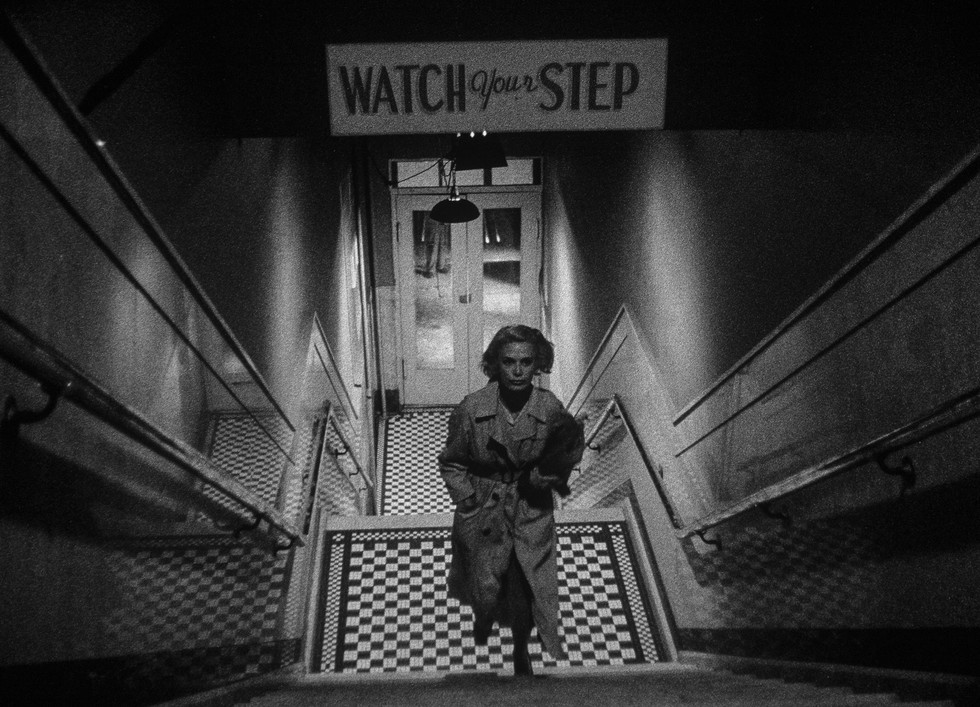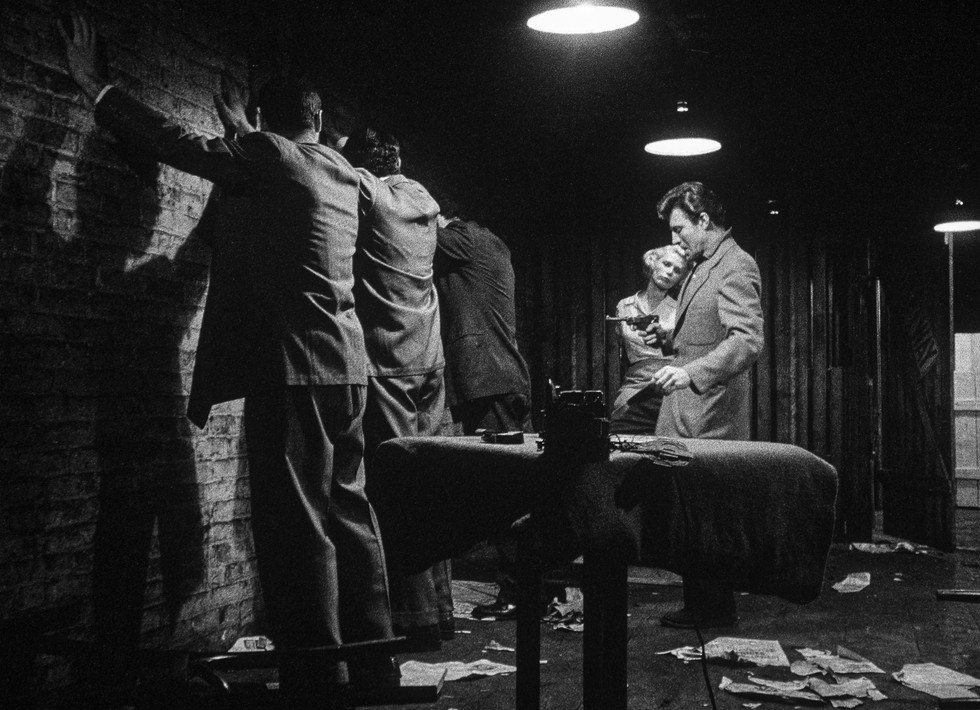Early Kubrick noir on 4K UHD – “Killer’s Kiss”
- Bill Kelley III
- Jun 21, 2022
- 5 min read
Updated: Jun 22, 2022
4K ULTRA HD REVIEW / HDR FRAME SHOTS
(1) Washed-up boxer Davey Gordon (Jamie Smith) rescues love interest taxi-dancer Gloria Price (Irene Kane) from her gangster boss/boyfriend Vincent Rapallo. (2) Director Stanley Kubrick captures an early morning scene in his hometown New York City.
(Click an image to scroll the larger versions)
“KILLER’S KISS”
4K Ultra HD; 1955; Not Rated
Best extra: Commentary with film historian Imogen Sara Smith
WITH A shoestring budget, one-man-band filmmaker Stanley Kubrick (“2001 A Space Odyssey,” “The Shining”) wrote, directed, photographed, produced, and edited his second film, “Killer’s Kiss.” A mere 67-minutes long, it’s a revenge tale captured in the shadowy streets of his beloved hometown, New York City. Most of the $75,000 budget was borrowed from a relative, while United Artists paid $100K to distribute it and another $100K for a future third film. “The Killing” (1956), a racetrack heist thriller that put young Kubrick on the map. It’s also getting a KL Studio Classics 4K Ultra HD release next month.
Kubrick started as a teenage street photographer, living in the Bronx and selling a number of his photographs to Look Magazine. He quickly became an apprentice photographer in April 1946 and was hired full-time as a staff photographer a year later until he quit in 1950. Most of the images explored everyday life, from shoeshine boys to debutantes, sleepers on the NYC subway, lovers on a park bench, kids climbing the rooftops of the city tenements, and inside the boxing ring with hopeful Walter Cartier. His first short film, “Day of the Fight,” focused on Cartier, his manager, and twin brother Vincent. Kubrick credits his apprenticeship as the catalyst to becoming a motion picture director.
(1) “Killer’s Kiss” opened in New York City on September 21, 1955. Davey Gordon paces inside NYC’s Pennsylvania Station waiting for a train bound for Seattle. (2) The story flashbacks to the night of his bout against Kid Rodriguez. (3&4) Before leaving his small apartment, Davey imagines his face getting cut during the fight. Then he feeds his goldfish. Boxer Rocky Balboa in the Best Picture winner “Rocky” (1976) also had a pet goldfish and a turtle. (5&6) Gloria Price peers into Davey’s apartment. (7) The two apartment dwellers leave at the same time, heading to their jobs - the boxing ring and the nightclub dancehall.
EXTRAS
During her academic and informative commentary, film critic and historian Imogen Sara Smith calls Kubrick’s earliest 1950s films “scrappy, DIY projects.” “Killer’s Kiss” exists at the intersection of “B-noir and New Wave bravado” while being a “formulaic crime flick,” with voice-over narration, violence, and sex. At the same time, it’s an independent art film “full of odd corks and stylized experiments,” in which Kubrick turns a brief nightmare sequence into a bazaar black-and-white negative. The camera races between a series of brick apartment buildings, forming a mental image from his main character Davey Gordon (Jamie Smith), a washed-up boxer. He’s fallen for his across-the-airshaft neighbor Gloria Price (Irene Kane), a blonde nightclub taxi-dancer, as the two apartment dwellers peer into each other’s windows. It’s very similar to Hitchcock’s “Rear Window” released the year before, where home-bound photographer Jim Jefferies (James Stewart) spies into his neighbors’ courtyard windows.
Smith says Howard Sackler, best known for writing “The Great White Hope,” actually wrote the screenplay, even though Kubrick credits himself in the opening titles. It’s still Kubrick’s story, wanting “to film the smell, feel and color of the city.” Kubrick captured most of the scenes with a small handheld 35mm camera, putting viewers inside the boxing ring, with Gordon, which director Martin Scorsese mimics in his masterpiece “Raging Bull.” In another scene, Gordon looks at himself in the mirror and flattens his nose with his finger to imagine a broken nose – something Kubrick captured while photographing Cartier.
The story follows the parallel paths of the main two characters as each prepares to go to work. Their “bodies are on display for money,” Smith says. Gordon to the ring and Price to the nightclub, the first of several long sequences without dialogue, which are the film’s most potent. “The script is more serviceable than brilliant, and so is some of the acting,” she continues. “It’s really more scaffolding on which Kubrick builds scenes for camera work, lighting, action, atmosphere, and editing.”
(1) A busy night in Times Square. (2) Davey gets taped up for his bout. (3) Gloria and her boss/boyfriend Vincent Rapallo (Frank Silvera) watch the fight on television. (4) Davey’s “glass jaw” takes him down and Rodriguez wins. (5) Sometime after midnight Vincent shows up at Gloria’s apartment and becomes violent. (6-8) Davey hears her scream and rushes to her side. In the morning they have breakfast and they start to become romantic. She agrees to travel with him to Seattle to start a new life to get away from the “human zoo” at the Pleasure Land nightclub.
After an unsuccessful night in the ring and Gloria being beaten by her boss/boyfriend, small-time crook Vincent Rapallo (Frank Silvera), the two decide to head to Seattle, where Davey’s Uncle George lives. Everything quickly spirals out of control escalating to murder, kidnapping, and a classic film noir chase sequence that eventually ends inside a mannequin factory filled with dozens of full bodies, arms, legs, and heads. Kubrick and company destroyed $15,000 worth of mannequins during the climactic fight sequence, which took two weeks to film.
Kubrick biographer John Baxter argues that Kubrick’s personality was profoundly shaped by his identification with the camera, says Smith. “With a brilliant sense of lighting, composition, and a detachment, which some people find cold, in his work.”
VIDEO
MGM/UA scanned the original camera negative in 16-bit 4K (1.37:1 aspect ratio), which became the basis of a very fine black-and-white 4K master. It extracts a splendid level of clarity from start to finish, without having to use second or third-generation footage to fill gaps of a damaged negative. The wide shots provide exceptional detail from the foreground to the distant background, with a good dose of moderate natural film grain – evident from a nighttime shot of Times Square.
For this presentation, Kino Lorber handled the HDR grading, which includes the standard HDR10 and the more advanced Dolby Vision metadata, providing a balanced grayscale with controlled highlights to a wide spectrum of mid-tones, and to the darker shadows.
Kubrick captured much of the drama with a handheld Eyemo camera, which held 100 feet of 35mm film. He borrowed the camera from cinematographer friend Max Glenn, but sadly it was stolen from Kubrick’s car.
AUDIO
The original mono track was a challenge. Originally captured during filming, Kubrick scrapped it and post-synced all the dialogue, just like a Sergio Leone spaghetti Western. The audio has been restored, removing pops and hiss, and presented in the 2.0 Mono DTS-HD Master Audio with front and clear dialogue.
Kino Lorber’s 4K presentation provides a first-rate glimpse into the early visual mind of one of America’s greatest directors.
— Bill Kelley III, High-Def Watch producer
(1-3) Gloria goes upstairs to the nightclub to ask Vincent for her final wages, but he refuses to pay her. (4&5) Gloria has disappeared from her apartment and Davey suspects that Vincent has kidnapped her. He demains Vincent to take him to her. (6&7) Gloria is being held by two of Vincent's henchmen inside abandon building. (8) A fight breaks out and Davey ends up unconscious again. (9&10) He eventually awakes and the chase continues to a mannequin factory.






















































